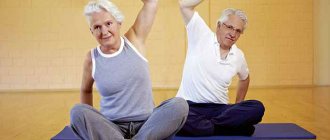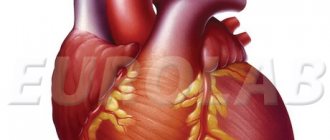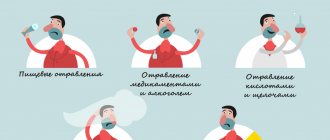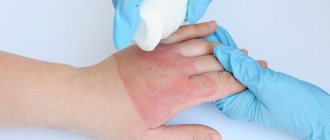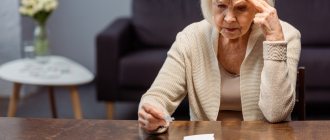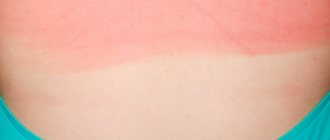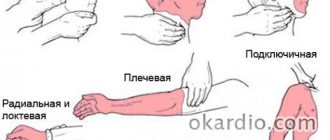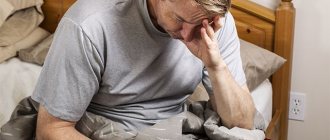October 29 is World Stroke Day. Every year in Russia this condition develops in 400-450 thousand people and leads to a high level of mortality and disability, therefore it is an acute medical and social problem.
A stroke can happen to anyone at any time and at any age. Therefore, it is necessary to be able to recognize the first manifestations of the disease and know how to provide assistance to a person with signs of a stroke.
How to recognize a stroke?
Acute cerebrovascular accident (stroke) is characterized by a sudden increase in:
Neurological symptoms
- movement disorder
- change in speech
- sensory impairment
- loss or impairment of coordination
- visual and auditory changes
General cerebral disorders
- change in consciousness
- headache
- vomiting, etc.
The 4-hour rule - effective first aid
In the case of stroke, there is the concept of a “therapeutic window”. This is the time when blood circulation can be partially or completely restored. The concept applies only to ischemic types of strokes, because when a vessel ruptures, it is necessary not to restore, but to stop the bleeding and remove the resulting hematoma.
The described window lasts 4 hours. During this period, the victim can be saved by conservative methods (using thrombolysis) or minimally invasive endovascular methods (using thrombus extraction).
Drug thrombolysis is a generally accepted method of first aid for stroke. Innovative thrombolytics used at the ACMD-Medox Medical Center effectively eliminate the cause of cerebral blood flow disturbances and help prevent irreversible consequences. However, after the end of the “therapeutic window,” the effectiveness of drug therapy rapidly decreases.
The statistics are as follows:
- if you seek help within the first 1.5-2 hours, 1 out of 4 patients will fully recover;
- if within 3 hours – 1 out of 9;
- if later than 4 hours – 1 out of 14.
Algorithm for determining signs of stroke:
STEP 1: Ask to smile (with a stroke the smile will be skewed)
STEP 2: Ask to stretch your arms forward and then raise them up (in the acute phase the person will not be able to do this or will only raise one arm)
STEP 3: Ask to shake your hands on both sides at the same time (in case of a stroke, the strength of the handshakes of different hands will be uneven)
STEP 4: Ask the patient to repeat any simple movement - wave a hand, describe a circle or square with a hand in the air, etc. (this will not cause difficulty for a healthy person)
STEP 5: Ask the patient to stick out his tongue (with a stroke, the tongue will be deviated to the side)
Main risk factors for stroke
| Uncorrectable risk factors | Adjustable risk factors |
| Age | Hypertension |
| History of stroke or stroke | Diabetes |
| Stroke or myocardial infarction from blood relatives | Atrial fibrillation |
| Migraine | Smoking |
| Gender (men are larger than women) | Hypercholesterolemia |
| Ethnicity | Thrombosis factors |
| Constriction of carotid or vertebral Arteries | Excessive alcohol consumption |
| Psycho-emotional overload. | Excessive salt intake |
First aid for a person with signs of a stroke
If the patient is conscious:
- Call an ambulance
- Lay the person down on a flat surface (floor, bed) with a pillow, blanket or folded sweater under their head.
- Ask the person to turn on their side if they feel sick
- Open the windows to let in fresh air
- Unfasten clothing that impedes blood flow and air flow (belt, collar, scarf, tight buttons)
- While waiting for doctors, collect documents and personal belongings.
If the patient is unconscious:
- Call an ambulance
112
–
unified rescue service
03 – for landline phones
103 – for landline and mobile phones
- Check for signs of life (breathing and carotid pulse)
- Lay the person on their side
- Wait for the ambulance to arrive, constantly monitoring the condition of the victim
Features of providing assistance on the street
If a stroke occurs on the street, first aid has the following features:
- Involve several people to help. Organize the actions of each of them, clearly distributing responsibilities (someone calls an ambulance, and someone assesses the general condition, etc.).
- Having placed the patient in the desired position, free the neck and chest to make it easier for him to breathe (remove the tie, unfasten the buttons, loosen the belt).
- Wrap up the limbs, cover the person with warm clothes (in cold weather), massage and rub them.
- If you have a mobile phone or contacts with relatives, inform them about what happened.
Stroke Prevention
- Maintaining a healthy lifestyle
. Everyone should give up bad habits (smoking, alcohol), maintain an active regime, and not gain excess weight. If you cannot completely quit smoking, you should reduce the number of cigarettes you smoke per day. Physical exercise is recommended, walking for 30 minutes 2-3 times a week. - Diet
. A healthy, balanced diet will help avoid hypertension and blood vessel blockage. - Controlling blood cholesterol levels
. - Antihypertensive therapy
. The risk of developing cardiovascular disease doubles as your blood pressure rises. About a third of patients with hypertension develop a stroke. Hypertension can be kept under control using special medications. The doctor selects the necessary drug. - No stress
. Maintain an even, calm, positive mood. Primary prevention of stroke is not a matter of just one day. Monitor your health constantly.
First aid for a stroke: what to do before the doctor arrives
October 29 is World Stroke Day. For this reason, together with the doctor, we have compiled a detailed guide to first aid for a stroke and found out what should not be done under any circumstances
What is a stroke and why is it dangerous?
A stroke is a disorder of blood circulation in the brain. It can occur due to a ruptured vessel or blockage by a blood clot. In this case, the nerve cells do not receive the required amount of oxygen, glucose and other nutrients, which can lead to their death.
There are several factors that increase the risk of stroke, including: excess weight, high cholesterol, diabetes, hypertension, alcohol and drug use, and smoking. In addition, doctors take into account genetic predisposition and age: the disease most often affects those over 45 years old.
Stroke can be ischemic or hemorrhagic. Subarachnoid hemorrhage is also isolated, which is rare, but in 50% of cases is accompanied by death. He is characterized by acute pain in the back of the head, convulsions, vomiting and loss of consciousness are possible.
Ischemic stroke, or cerebral infarction, is the most common type of cerebrovascular accident. The immediate cause of ischemic stroke is blockage of a vessel supplying the brain. This may occur due to the formation of a blood clot or its entry into the lumen of the vessel. People with atherosclerosis, cardiac arrhythmias, or heart valve disease have an increased risk of developing blood clots. Ischemic stroke can occur when you take medications on your own without a doctor's prescription (for example, diuretics or combined oral contraceptives).
Symptoms of an ischemic stroke develop over a short period of time and are not accompanied by headaches, since there are no pain receptors in the brain. Most often this happens at night when a person is sleeping, and in the morning when waking up he discovers that an arm or leg is not working or speech is impaired.
In a hemorrhagic stroke, the wall of a vessel ruptures and blood permeates the brain tissue. Frequent causes of hemorrhagic stroke are increased blood pressure, taking drugs that reduce blood clotting, disruption of the structure of the vessel wall (aneurysm) or congenital anomalies of the vascular bed - arteriovenous malformations. Hemorrhagic stroke develops quickly and is often accompanied by headache. If blood soaks into the choroid of the brain, where there are pain receptors, a person may lose consciousness. This subtype of stroke has a high rate of death, but if the person survives, he recovers well.
First aid for stroke
It is advisable that a person with a stroke be taken to hospital as soon as possible - within three hours of the onset of the first symptoms. Therefore, it is important to properly organize assistance for a person with suspected stroke.
Call an ambulance. If you experience symptoms of a stroke, ask for help and have someone else call the doctor. Provide brief information about the patient (age, what happened). Leave your contact information so we can contact you. Be prepared to meet the physician and provide access to the patient.
Help the patient find a safe position: it is best to lie on his side with his head slightly elevated.
While you are waiting for an ambulance, try to find out from the patient when the symptoms began, what chronic diseases does he suffer from and what medications does he take? This information will save doctors time and allow them to quickly make decisions.
If a person is unconscious and not breathing, cardiopulmonary resuscitation must be performed. However, in order to provide it correctly, it is necessary to undergo specialized training courses.
If the patient has difficulty breathing, remove restrictive clothing (tight collar, tie or scarf) and open the windows.
— If a person is cold, cover him with a warm blanket.
— While the ambulance is traveling, do not under any circumstances try to give the patient something to drink, feed, or force him to stand up. The person may have difficulty swallowing and may choke. And when trying to stand up due to high blood pressure or lack of coordination, there is a high risk of falling and receiving additional injuries.
- Monitor the person closely for any changes in their condition. Be prepared to tell the emergency operator or doctor about their symptoms and when they started. Be sure to indicate whether the person fell or hit their head.
— In some cases, it is advisable to transport the patient to the nearest hospital yourself if you are not confident in the efficiency of the team.
— Discuss this decision with the emergency operator.
It is good if several people provide assistance. For example, one will be responsible for resuscitation, the second will monitor pulse and blood pressure, and the third will talk on the phone with doctors. Call neighbors and others for help if the sick person is on the street or in a public institution.
Signs and symptoms of stroke
Depending on the severity of the stroke, symptoms may be mild or severe. You need to know what to look for. To check for warning signs of a stroke, you can use the Western mnemonic FAST, which means [4]:
F - face - “face”
A - arm - “hand”
S - speech - “speech”
T - time - “time”
The first symptom is facial asymmetry. If you ask a person to smile, he will not be able to do it; one corner of his mouth will remain downturned. When the patient sticks out his tongue, it may deviate to one side. As soon as you have performed a small operational test, you must immediately call an ambulance. Often the victim does not respond to requests, cannot speak coherently and cannot raise both hands at the same time; sometimes he is in a state of disorientation, the pupils are dilated or there is no reaction to light.
Transient ischemic attack can be difficult to identify based on symptoms alone [5]. They resolve completely within 24 hours and often last less than five minutes. The attack causes temporary circulatory failure and may be followed by a more severe stroke, so it is important to see a doctor as soon as possible.
However, it is worth remembering that only a small part of the brain is responsible for movement and sensitivity, therefore, if blood circulation is disrupted in other parts of the brain, a variety of symptoms may occur: impaired speech, swallowing, vision, dizziness, lack of coordination, confusion and loss of consciousness, epileptic seizures, sudden memory loss or inappropriate behavior of the patient and others. The main task is to call a doctor if someone feels unwell: unusual symptoms appear that were not there before. It’s better to be on the safe side than to miss time, which is the most important factor determining the prognosis for a stroke.
First aid for a stroke before the ambulance arrives
At home, you can carry out a set of measures to support the patient, but in any case you cannot do without professional doctors. If blood pressure rises, it does not need to be lowered; this is an adaptive reaction of the body. Thus, the body tries to improve blood supply to the brain through special “backup pathways” of blood circulation - collaterals. You should not give the patient any medications because you do not know whether the patient has a stroke or other illness. In addition, ischemic and hemorrhagic strokes are treated completely differently. It is the doctors’ task to make a diagnosis within 3 hours, deliver to a specialized center for the treatment of stroke and prescribe appropriate treatment. It is important to understand that nerve cells die within 5 minutes if they do not receive sufficient blood supply. Therefore, the infarction zone can no longer be saved, but around the zone of cell death a border region is formed (the so-called “penumbra” - penumbra), where nerve cells are on the verge of death. If left untreated, the penumbra area increases and more and more cells die, which is manifested by worsening stroke symptoms and a poor prognosis for life and subsequent recovery.
Self-help for stroke
If the symptoms are minor and the victim remains conscious and able to move, he can administer first aid to himself. But only after an ambulance is called. In case of a stroke it is worth:
- Tell someone other than doctors that you feel unwell. Call neighbors and relatives who are nearby.
— Take a horizontal position with your head raised or in a position lying on your side.
- Free your neck and chest from constricting jewelry, shirt collar, tie and other clothing.
- Do not get up until the ambulance arrives.
What will doctors do?
Diagnosis and treatment of the patient is carried out in the neurology department. If a little time has passed since the onset of the attack, the patient has a chance to fully recover.
At the hospital, he undergoes a CT scan and thrombolytic therapy: a drug that dissolves blood clots is injected. In some cases, doctors choose thromboextraction - mechanical removal of blood clots from blood vessels.
Recovery after a stroke
Until the person’s condition stabilizes, he or she must remain in an intensive care unit (resuscitation unit). After his condition improves, he is transferred to a regular ward and prescribed medications to prevent a recurrent stroke. In addition to doctors, rehabilitation therapists, speech therapists, and clinical psychologists work with the patient. The first days and weeks are very important for subsequent recovery. The rehabilitation process depends on many factors, including the speed of first aid and treatment provided, and the presence of chronic diseases.
The first stage of recovery takes place in the hospital: the patient's condition is assessed and stabilized. After treatment, a person can remain in the hospital or be discharged home, but in any case, the doctor’s recommendations must be strictly followed. If stroke symptoms are mild, rehabilitation can be done on an outpatient basis. First of all, it is important to relieve muscle tension, strengthen the mobility of the limbs, and stimulate their mobility with simple physiotherapeutic exercises [6].
If you are caring for someone who has had a stroke, write down your doctor's instructions for further treatment [7]. The patient may need systematic transportation to a rehabilitation specialist or organization of medical care at home.
Stroke Prevention
To reduce the risk of stroke, you need to follow the basic rules of a healthy lifestyle: eat a varied and high-quality diet, exercise, spend time outdoors, relax, and eliminate bad habits. Patients over 40 years of age should undergo periodic medical examinations (dispensary examinations or check-up programs). It is important to carry out timely treatment of chronic diseases that can increase the risk of stroke.
Doctor's comment
Sergey Makarov, neurologist, otoneurologist at GMS Clinic, assistant at the department of nervous diseases at the Institute of Professional Education of the First Moscow State Medical University named after. THEM. Sechenov
– What drugs can be used safely?
– Strange as it may sound, no medications should be given to a patient suspected of having a stroke. Even medications to lower blood pressure can worsen the prognosis, since increased blood pressure is the body’s protective reaction to blockage of the vessel. Unfortunately, there are currently no drugs with proven effectiveness that can clinically significantly change the course of stroke. You need to call a doctor, and then specialists will decide what medications are needed and in what doses.
– How does the lack of first aid affect further treatment?
– The main principle of medical ethics is primum non nocere. “First of all, do no harm.” Therefore, the main help is to ensure the safety of the patient while he waits for emergency medical help. This is what this article is about. Currently, many specialized vascular centers have been created in Russia for the treatment of heart attacks and strokes. If the patient is delivered within this time frame during the “therapeutic window” - the time when the blood clot can be dissolved or removed - then the person has a good chance of recovery, although this process is individual. However, often the duration of the stroke cannot be determined or the patient has contraindications to thrombolytic therapy. In such cases, doctors are forced to limit themselves to symptomatic therapy. The patient is ensured that vital functions are maintained and medications are prescribed to prevent a recurrent stroke.
– If you take a patient to the hospital yourself, do you need to call in advance what to take with you, how justified is this, or is it better to wait for an ambulance?
– This issue should be discussed with the emergency operator. In the vast majority of cases, transportation of patients is carried out by an ambulance team. In large cities, emergency services work very quickly. When transporting a patient by ambulance, the patient is already waiting at the hospital, so many patients receive effective treatment for acute cerebrovascular accident. When transporting a patient to the hospital, you do not need to take anything with you, since the patient will go straight to the intensive care unit, where you cannot take personal items.
Link to publication: RBC
Cost of initial appointment, research, treatment
It is advisable to talk about the price of the initial appointment during a preventive examination, when there is no stroke as such, but the person has pathologies that increase the risk of its development. The cost of diagnostic procedures for stroke can be found in the corresponding table, but it must be taken into account that many studies are used repeatedly to monitor the treatment process.
It is quite difficult to determine even the approximate cost of stroke treatment in Moscow. Much depends on the type of stroke, the extent of brain damage, the patient's condition, the timeliness of medical care and other important factors. In any case, the cost of medical services will be justified - after all, we are talking about preserving life.
Treatment of patients in specialized stroke departments, cardiology centers - stroke units (IB) - reduces mortality and disability by 20%, reduces financial costs at all stages of treatment.
Advantages of treatment at the clinic of JSC "Medicine"
On the basis of a multidisciplinary medical center (academician Roitberg’s clinic) there is a cardiac rehabilitation center specially created for the treatment of strokes. How does IB differ from a regular neurological or therapeutic department:
- specializes in the treatment of patients with stroke, its staff is trained to care for this group of patients;
- the necessary diagnostic facilities - from computer and magnetic resonance imaging scanners to a laboratory with round-the-clock operation, an intensive care unit;
- work according to local protocols developed on the basis of domestic and international principles of stroke treatment;
- early mobilization and intensive rehabilitation.
multidisciplinary team:
- vascular neurologists;
- nurses are trained to care for stroke patients;
- rehabilitators who help restore physical capabilities and self-care skills;
- speech therapists – restore the ability to oral and written communication, correct swallowing disorders;
- neuropsychologists - working to restore cognitive functions.
In addition, in the cardiac rehabilitation center there is a constant opportunity to consult with doctors of various specialties: cardiologist, neurosurgeon, psychiatrist, urologist, endocrinologist, etc. In developed countries, hospitalization in stroke units has become the “gold standard”. In the UK and Germany, 9 out of 10 patients with stroke are treated in an IB, in Poland - 8 out of 10.


